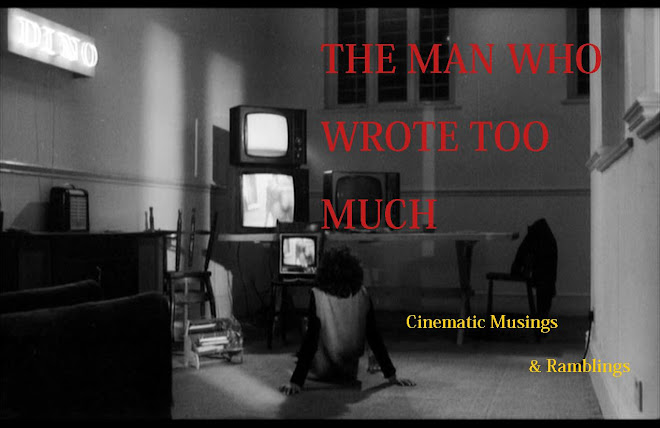As time goes
by, I find myself succumbing to nostalgic pangs for increasingly stereotypical
joys of 80s/90s technology, you know the usual “remember when we all had to
make cassette mixtapes rather than iTunes playlists, it was so much more individual etc”. This redundant longing
for a more ‘innocent’ time came to mind again recently when thinking about how
I had first seen Harley Cokeliss’ Black
Moon Rising.
I’d finally
got a TV for my very own room when I was 12, and oh the joys I had watching
late night film showings on the four glorious channels we had back then. The
amount of ‘discoveries’ I made just through pure chancing on short TV guide
synopsis, stay up late, headphones in, glued to that cathode ray tube. BBC 1
playing the garish splatter end of Hammer films on a Friday night (think Twins of Evil (1971), Scars of Dracula (1970)),
the mighty cult cinema bin that was Moviedrome on BBC 2, and the various mid
budget 80’s & 90’s action and horror films ITV would fill the post 11pm
void with, of which, for a while, this picture was a mainstay.
Some years
later that I found out the story is actually credited to my first true film
love John Carpenter, though further investigation showed that although he had
written the script, it was as a hungry young filmmaker fighting for scraps in
the early seventies. His influence therefore isn’t particularly noticeable in
the finished product, only Lalo Schifrin’s synth ‘n’ drum pad laden score bears
anything resembling his work.
The film’s
plot follows Quint a professional thief doing a line in government espionage.
If you’re expecting an Ethan Hunt type though you’ll be let down, Tommy Lee
Jones’ blue collar burglar is more a post Lee Marvin cynical street tough, who
would rather spend his time sinking a few in dive bars and pool halls.
His latest
assignment has gone awry, and he finds himself hunted by rival Marvin (fans of
Early 80’s US Hardcore will be excited to find that he’s played by Fear’s chief antagonist Lee Ving!) and in
trouble with his government masters (represented by the late Bubba Smith A.K.A.
Hightower!). Quint crosses paths with a trio of aspiring car producers, whose
latest supercar project is subsequently stolen by a group of car thieves led by
Nina (Linda Hamilton in the between Terminator’s doldrums) who in turn is in
the service of corporate overlord Ed Ryland (Robert Vaughn, who mined a fine
line in this sort of yuppie kingpin role during the 80’s).
The hiring
of Quint to retrieve this supercar becomes the central focus of the plot, and
oh what a piece of work the car is, it’s introduced to us screaming across
desert flats at 300 mph in a complete knock off of the opening credits to Knight Rider. Alas this supposedly
ultra desirable supercar is somewhat of a joke to look at, I think the makers
were thinking Bertone (y’know like the Stratos Zero featured in the King of
Pop’s ego fest Moonwalker (1988)),
but alas it looks more like something I would have drawn as “a car from the
year 2010!” as a 10 year old child.
The film
follows a predictable but nonetheless entertaining enough path, Quint and Nina
join forces and get it on to some smooth jazzy vibes, Quint receives a
retribution beating for his earlier indiscretions and the set piece finale sees
Quint and the supercar crew taking on Ryland in a low budget skyscraper
infiltration that brings to mind certain Nakatomi Plaza adventures that would
follow a few years later.
My love of
films being set in night time Los Angeles has been well documented previously i’m
sure, and as usual this is the primary reason the film still holds fond
reminiscence for me. All I need are some slick city street driving scenes and
frequent cutaway shots to blue sheen skyscrapers and i’m drooling. This films
provides such ‘Mannian’ (is that a
term yet? If not, i’m coining it) neo-noir delights aplenty. It’s one of those films you
can get on bottom rung DVD company labels in £1 shops, pick it up, it’s a more
than competent, fun, throwaway actioner with a tasty mid 80’s vibe and a comedy
hot wheels car, go on.

+2.jpg)
+5.jpg)
+7.jpg)



+1.JPG)
+3.JPG)
+4.JPG)
+1.JPG)
+2.JPG)
+4.JPG)
+1.JPG)
+2.JPG)
+3.JPG)